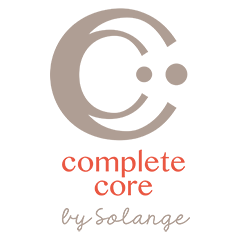Diastasis Recti or Abdominal separation occurs during pregnancy as the muscles and ligaments stretch, the uterus moves upwards in the abdomen, and hormones increase, making everything more lax. It can be further exacerbated by lifting, incorrect breathing and injury during birth. I see varying degrees of separation post-partum from within normal to borderline to serious. Every post-partum woman, whether you are just getting back into exercise or have been exercising regularly should get evaluated for diastasis recti separation.
I see a lot of women that are losing weight and complain of a pooch which turns out to be a separation. I see cases where a separation persists well beyond the first year and some that are present in women with school age kids. Why? Because it was never assessed. Many people don't know to check for it.
How will you know if you have this? If the abdominals are split you can see the belly protrude in a cone shape when you sit up from a reclined position. You may also feel a gap in between your muscles centered around the belly button. This is something that is not routinely assessed at your 6 week follow up. Unless you are working with a physical therapist, post-partum trainer or taking a special post-partum fitness class you will not get checked. Often times people will not be aware of this condition.
Having a Diastasis Recti separation will stand in the way of getting results. It must be corrected in order to regain core strength. You can put a lot of effort into your exercise program but if you have this condition your core will remain weak. Furthermore your current exercise program can even create more weakness. Many exercises including planks, excessive twisting, Pilates roll ups, and supermans are contraindicated for a separation. It is also a risk factor for lower back pain.
I check every post-partum client for diastasis recti separation. I show a corrective exercise if necessary and encourage my students who have a separation to do corrective exercise when they need to modify. A separation will not close without specific corrective exercises. In addition, I teach stabilization exercises to help the pelvis/hips and posture work to realign the body after pregnancy. The exercises often don't look like much, but if you've experienced them you know they are hard. With practice you learn to connect with muscles that are weak and let go of strong muscles that are overworked. The good news is people start to feel better after only a few weeks.
Everyone wants to know how long it will take for a separation to close. You must make the time for your home program and be consistent. I encourage a very specific home program to be done 3 times a day if possible! You also must make sure you are not doing anything in your exercise program that conflicts with closing the separation and is too aggressive. Lastly, you must watch your body mechanics and posture during daily activities and especially when carrying the kids.
Do you have a question? Ask Solange by email or comment below. For more information on postpartum exercise visit our exercise section.
***Always consult your doctor before beginning any exercise program. If you have pain with exercise that does not go away with modifications discontinue to avoid injury.

